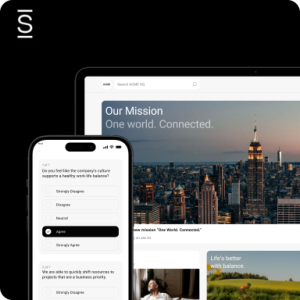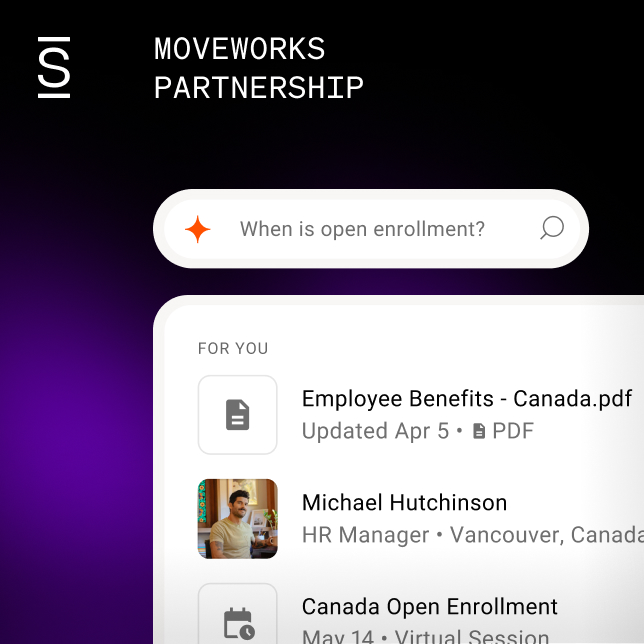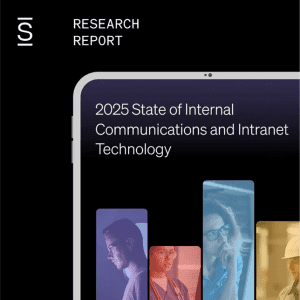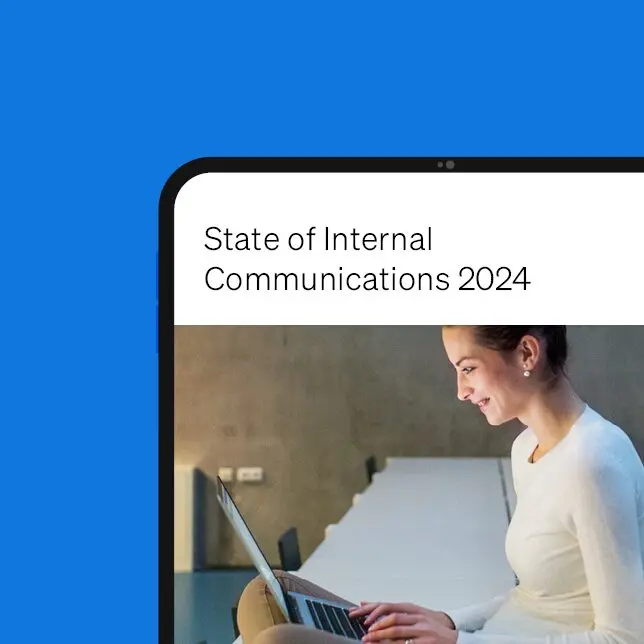Internal communicators spend their days fighting fragmented systems, buried information, and messages that miss the mark. Meanwhile, some organizations have completely cracked the code on IC technology and are driving measurable business results.

2025 State of Internal Communications and Intranet Technology Report
- 1 The IC revolution from cost center to revenue driver
- 2 The technology divide determines your success
- 3 Why your implementation model determines your results
- 4 IT-IC disconnect shows technical success doesn’t equal adoption
- 5 How leading organizations use technology to cut through the noise
- 6 The three barriers keeping organizations stuck
- 7 Strategic next steps for every intranet set-up
- 8 Your intranet strategy is your IC strategy
Simpplr recently conducted extensive research to gain insights into the state of internal communications and intranet technology in 2025. We surveyed nearly 800 professionals in internal communications, IT, and HR, in organizations across various industries, for our latest State of Internal Communications and Intranet Technology report.
What we discovered reveals a stark reality: There’s a massive performance gap emerging between organizations that have invested in modern intranet technology and those still cobbling together legacy systems — or without any system at all. And this gap is getting wider every day.

The IC revolution from cost center to revenue driver
Let’s start with some good news. Our research found that internal communications has finally earned its seat at the strategic table — and the data proves it. The vast majority of survey respondents noted the IC function’s positive impact on key metrics, including engagement, productivity, culture, retention, and revenue.
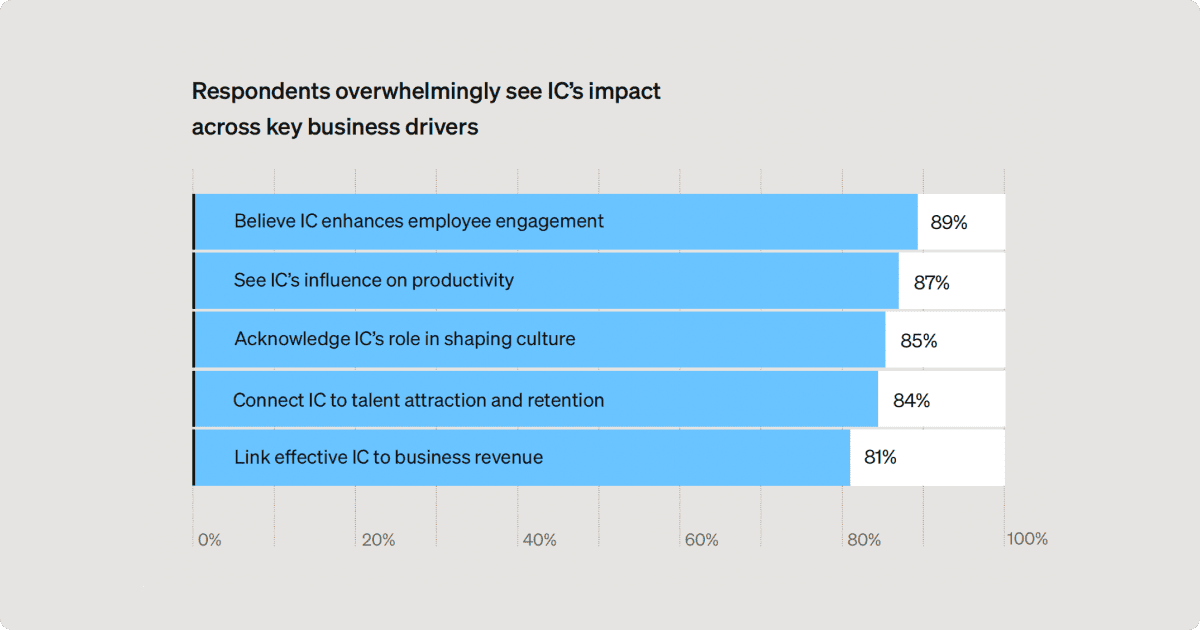
IC teams are also measuring business impact through Customer Satisfaction Scores (55% of organizations), sales growth tracking (46%), and productivity metrics like task completion time (45%). As a result, executive buy-in has reached unprecedented levels, with 79% of respondents saying leadership now understands the importance of internal communications, and many are backing it up with increased budgets.
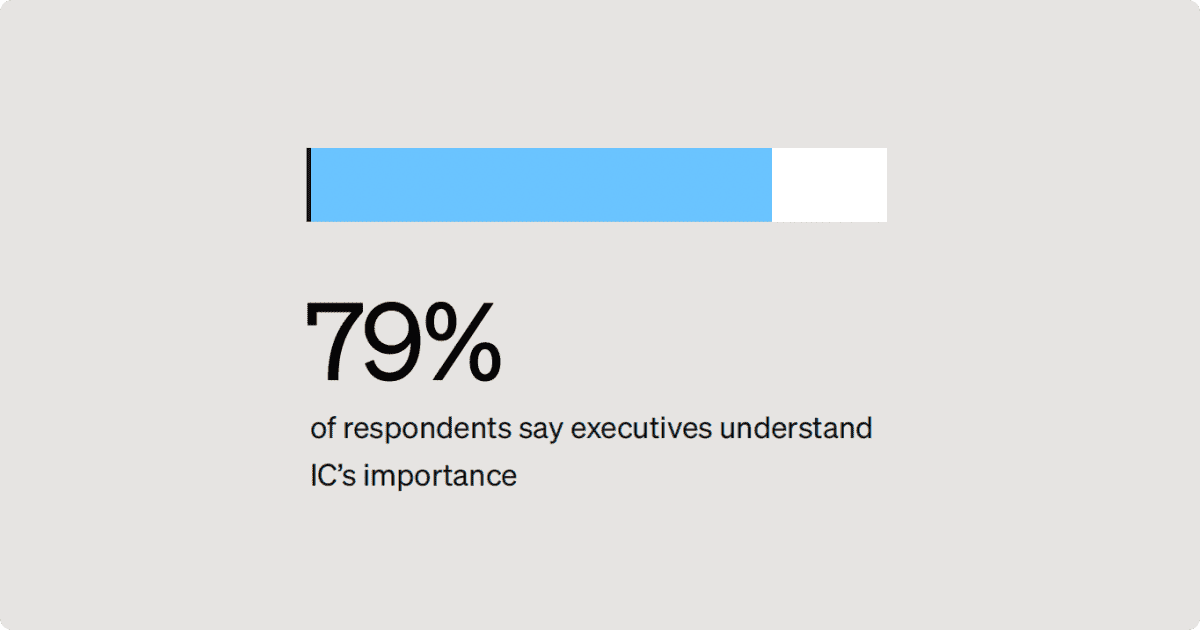
Not every organization is seeing these results. Let’s take a look at what sets organizations apart in their internal communications and intranet strategies, according to Simpplr’s intranet report, as well as tips for improving your IC effectiveness no matter the current state of your intranet.
The technology divide determines your success
A clear performance gap in internal communications exists between organizations with an intranet vs. those without. Survey respondents from organizations with an intranet were twice as likely to rate IC as “excellent” compared to those without one. Lack of adequate employee communication technology also negatively impacts the employee experience and business outcomes.
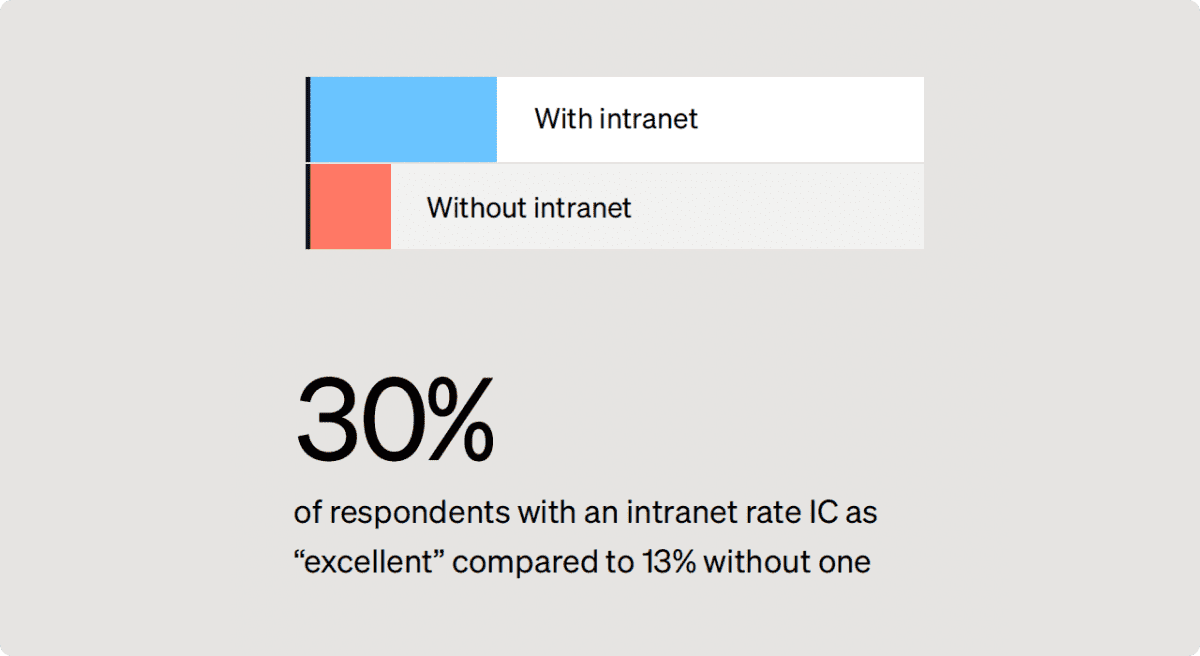
Organizations without an intranet are operating at a disadvantage:
- 27% less likely to report improved IC performance year-over-year
- 19% less likely to rate leadership communications as effective
- 14 percentage points lower on employee engagement impact
- 15 percentage points lower on productivity impact
- 13 percentage points lower on revenue impact
While the data doesn’t tell us about correlation vs. causation here, organizations that value and prioritize the employee experience as a whole are more likely to implement platforms and tools that improve it, such as an intranet. The data featured in the intranet report also shows the positive impact an intranet makes on the internal communications function.
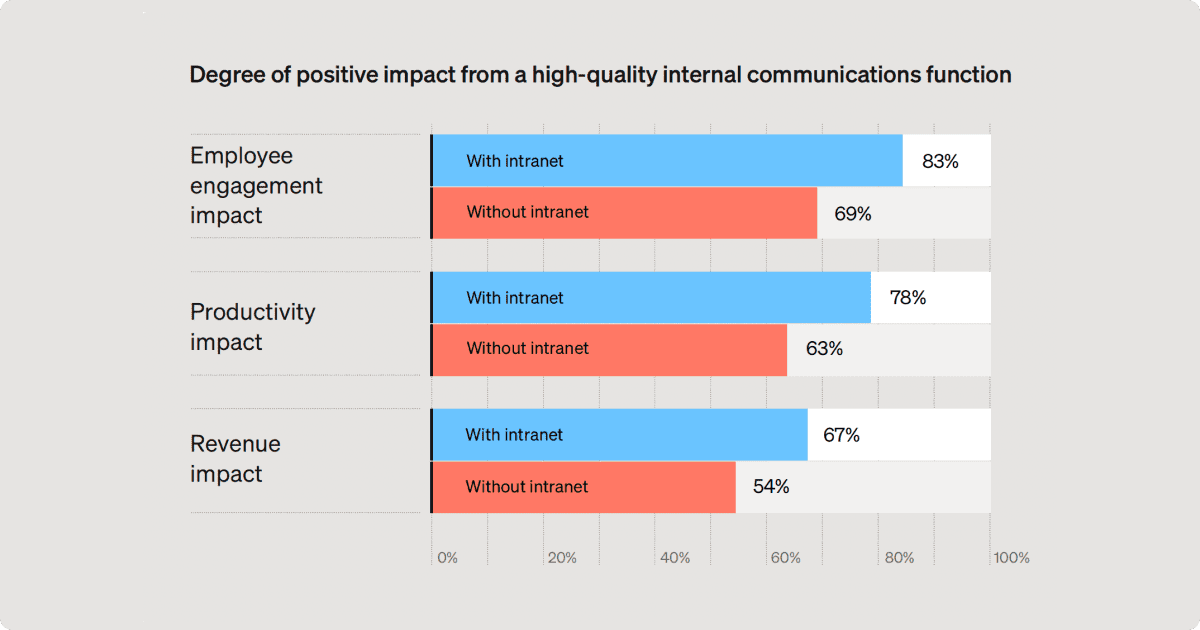
Why your implementation model determines your results
Here’s a reality check: 91% of respondents report having some form of intranet. But that doesn’t mean their intranet is actually effective. Our research identified three distinct approaches to intranet technology, each creating dramatically different outcomes.
Multivendor approaches (55%)
The majority of organizations combine separate solutions within their intranet, such as surveys, newsletters, and recognition. They experience the most technical issues of all three solutions. The biggest challenge: 47% cite heavy IT bottlenecks as their primary pain point. It’s no wonder that 42% would switch to an all-in-one solution if they could.
These systems might function well enough to avoid replacement, but they’re bleeding efficiency: Employees waste time switching between disconnected tools, IT teams burn resources on maintenance, and IC professionals can’t execute sophisticated strategies because their technology won’t support them.
All-in-one solutions (32%)
Organizations using integrated, purpose-built platforms report significantly fewer implementation challenges across every category measured: process, prioritization, and technical. They also achieve higher employee connection rates (81% vs. 74%).
More importantly, 64% of all-in-one users plan to stick with their current approach, indicating genuine satisfaction rather than grudging acceptance.
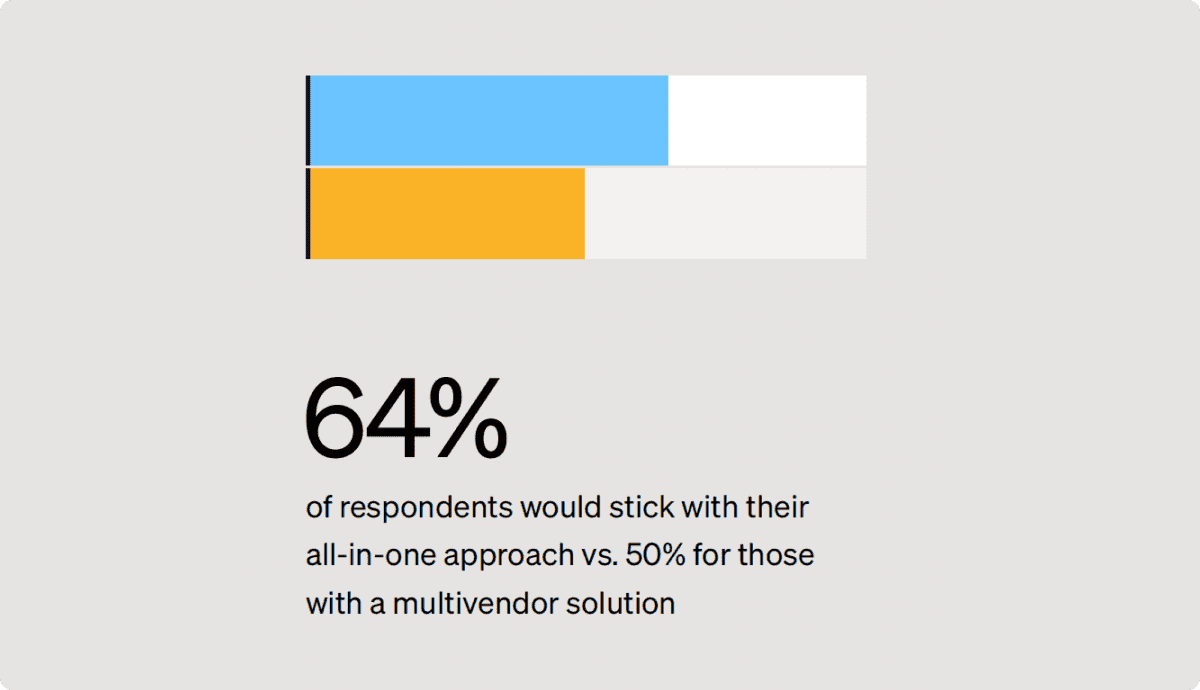
Custom-built solutions (12%)
Despite the higher investment, organizations with custom-built solutions face considerable technical challenges, especially with heavy IT dependency and a nonintuitive interface. Nearly 40% struggle with audience targeting — a basic requirement for effective modern communications. The hidden costs in developer time, maintenance, and feature limitations often outweigh the perceived benefits of building an intranet in-house.
IT-IC disconnect shows technical success doesn’t equal adoption
One of the most revealing findings involves the relationship between IT and internal communications teams.
Nearly half of respondents say their IC budgets are controlled by IT departments, creating an interesting dynamic where technical requirements and user experience priorities don’t always align. IT professionals report 92% satisfaction with intranet functionality compared to just 76% from other departments.
This satisfaction gap reveals an opportunity for a more tightly knit partnership: What works from a technical perspective doesn’t automatically translate to employee adoption or business impact.
Non-IT departments are also nearly twice as likely to want to switch from custom-built to all-in-one solutions (50% vs. 28%). This suggests that while IT teams appreciate technical sophistication, the people actually using these systems daily prefer simplicity and effectiveness.

The most successful organizations bridge this gap by choosing intranet technology that delivers both enterprise-grade technical capabilities and intuitive user experiences.
How leading organizations use technology to cut through the noise
The highest-performing IC teams don’t just have better technology (plenty of low-performing ones have all the latest tech). They use it strategically to solve real business problems.
Our research shows the most valuable intranet technology capabilities are:
- Employee self-service and HR support (65%)
- Advanced analytics and insights (63%)
- Workflow automation (60%)
- AI-powered personalization (57%)
To be effective, intranets must streamline IC tasks and make self-service as easy as possible to reduce time and frustration for employees and HR professionals.
From broadcast to precision targeting
In an era where employees are overwhelmed by communications, the ability to send relevant, targeted messages is essential for cutting through the noise. Organizations are split between uniform (47%) and targeted (50%) communication approaches. But here’s the key insight: All-in-one platform users find targeting significantly easier (60% vs. 39%).
AI integration is the new competitive advantage
Respondents at organizations with intranets are significantly more likely to view AI positively (74% vs. 48%) and use it weekly or daily (60% vs. 27%). This disparity might indicate that organizations with an intranet are generally more technologically advanced, or their employees are more comfortable with advanced technology such as AI tools.
The top uses for AI in IC are research, summarizing content, and content generation, showing that IC professionals are using it to save valuable time and streamline operations wherever possible.
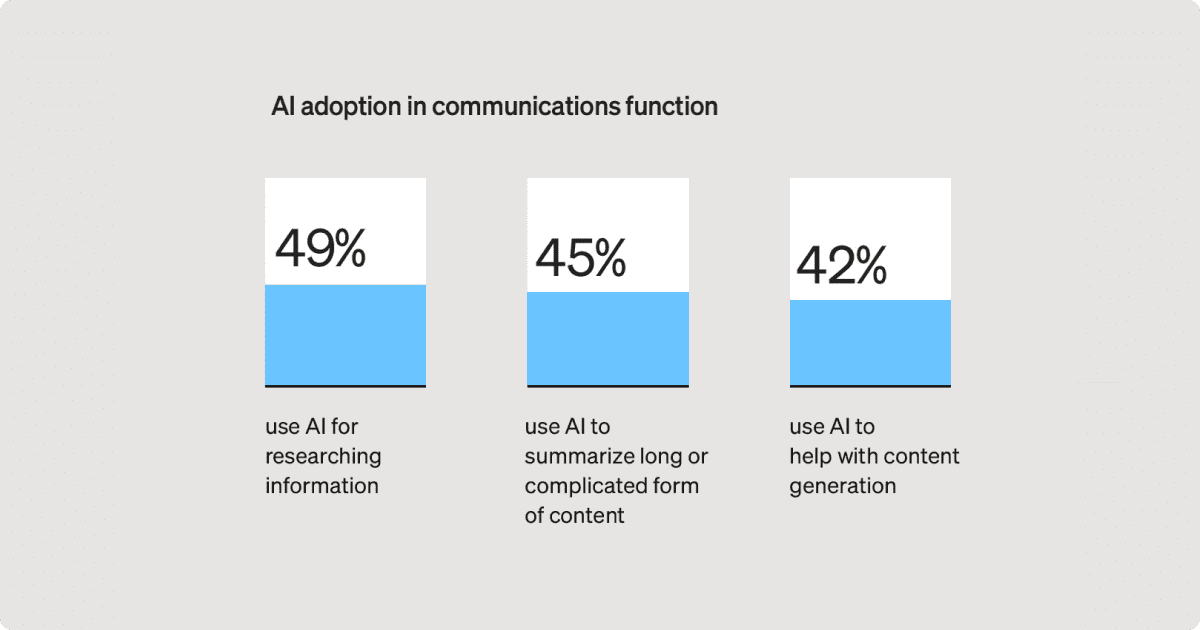
With 90% of CHROs expecting AI integration to become much more prevalent in 2025, organizations without AI-ready intranet technology are falling further behind.
The three barriers keeping organizations stuck
Despite the clear advantages of modern intranet technology, many organizations remain trapped by predictable obstacles. Processes get in the way of progress, poor user experiences abound, and technical systems are fragmented and frustrating.
Process inefficiencies put up roadblocks
Heavy IT dependencies create bottlenecks for 46% of respondents, while 37% report that it takes a lot of manual effort to maintain content. When your IC team needs IT resources to update a policy document or launch a survey, you’re not set up for success.
Solution: All-in-one platforms reduce process challenges for 69% of users vs. 31% using multiple-vendor approaches.
Nearly half of communications professionals report lack of time and team capacity as the top barriers to achieving their goals in 2025 (Gallagher).
Poor user experience hurts functionality
Half the respondents said their intranet competes with too many other tools, and 26% report limited or challenging functionality that increases the learning curve. A poor user experience leads to predictable results: low usage, employee frustration, and leadership questioning the investment.
Solution: Modern platforms eliminate technical challenges for 30% of users vs. just 14% using fragmented approaches.
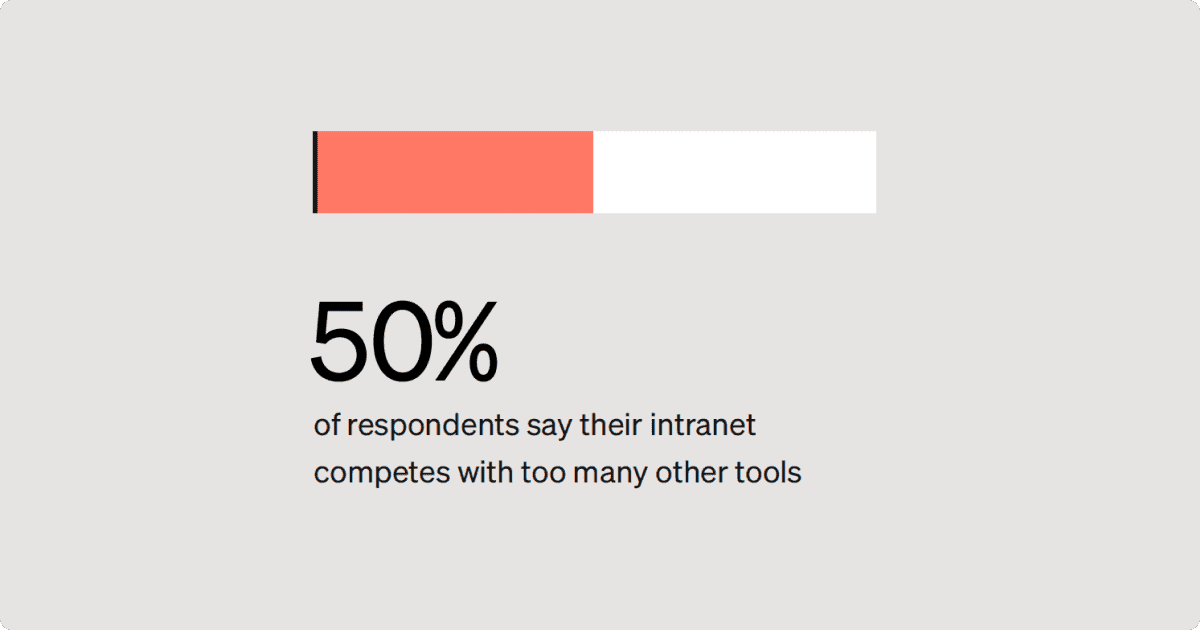
Fragmented technology limits adoption
Performance issues undermine confidence and adoption for 38% of respondents, and uneven adoption across teams creates information gaps for 37%. This is often because different departments have different levels of access or functionality. When your intranet doesn’t work consistently for everyone, it doesn’t work well for anyone.
Strategic next steps for every intranet set-up
No matter your current setup, there’s a proven approach to improving your IC technology effectiveness. Here are a few of the recommendations featured in the full report.
Organizations using multiple vendors (55%) need to start with a comprehensive audit of their current systems. Calculate the real total cost of ownership, including hidden IT overhead, and employee productivity losses, then use peer benchmark data to build a compelling business case for consolidation.
Organizations with all-in-one solutions (32%) should focus on optimization. Most organizations are significantly underutilizing their existing capabilities — particularly audience targeting, AI-powered personalization, and advanced analytics — representing major missed opportunities for impact.
Organizations with custom-built solutions (12%) need to evaluate whether continued development delivers better ROI than switching platforms. Assess the total cost of ownership, compare capabilities against more purpose-built solutions, and verify that you have met the needs of your IC teams.
Organizations without dedicated platforms (7%) must address cost, security, and resource concerns head-on. Work with vendors who understand enterprise needs and start with a phased approach that demonstrates value before requesting larger investments.
Each path requires different investments, but the outcome is the same: measurably better internal communications. The question is how quickly your organization wants to close the performance gap.
Your intranet strategy is your IC strategy
Internal communications technology has become a competitive differentiator that organizations can no longer afford to ignore. The data reveals a stark reality: Organizations with modern intranet technology are creating connected, engaged workforces that drive measurable business results, while those with fragmented systems continue falling behind.
Your employees already know what good technology feels like. The question is whether your organization will meet those expectations or continue with fragmented, outdated systems that frustrate employees and limit business performance.
For the full picture and in-depth recommendations for your organization, get your free copy of the 2025 State of Internal Communications and Intranet Technology Report.
Want to see how Simpplr’s modern intranet technology can transform your internal communications? Request a demo today.
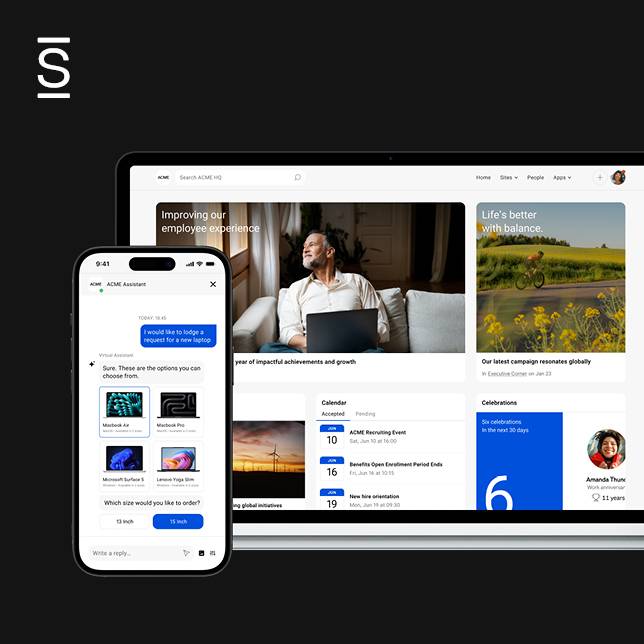
Watch a 5-minute demo
See how the Simpplr employee experience platform connects, engages and empowers your workforce.
- #1 Leader in the Gartner Magic Quadrant™
- 90%+ Employee adoption rate


